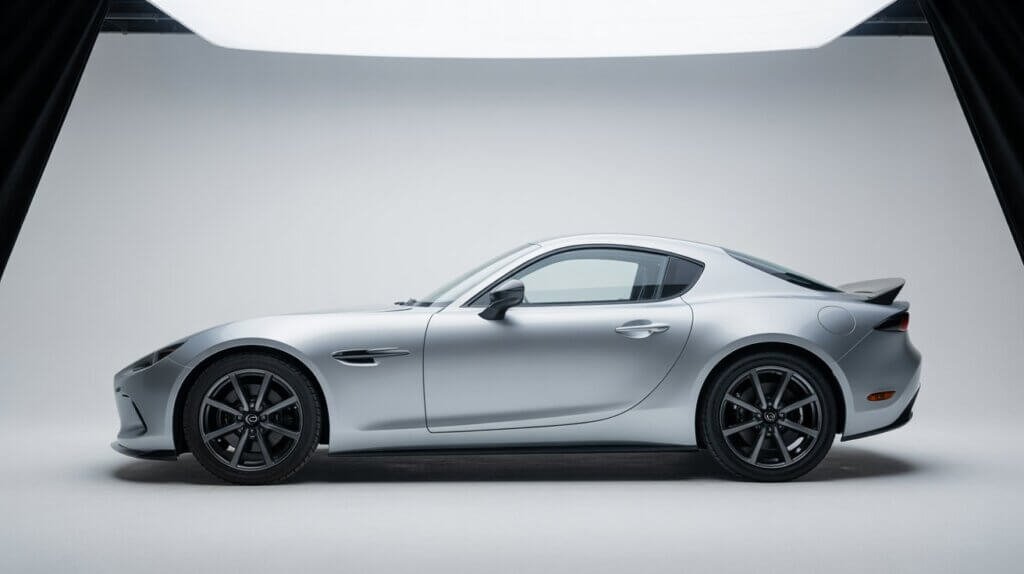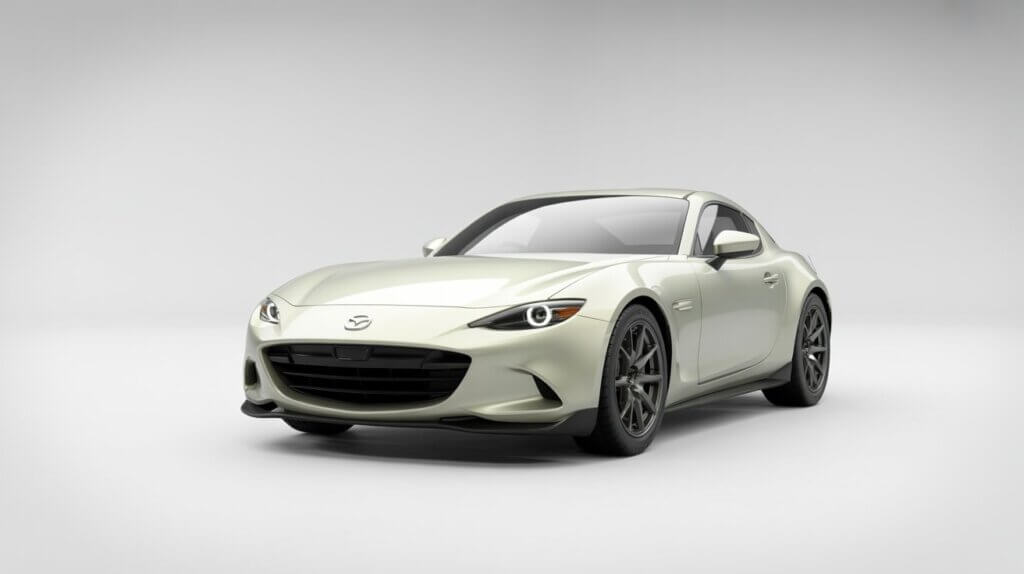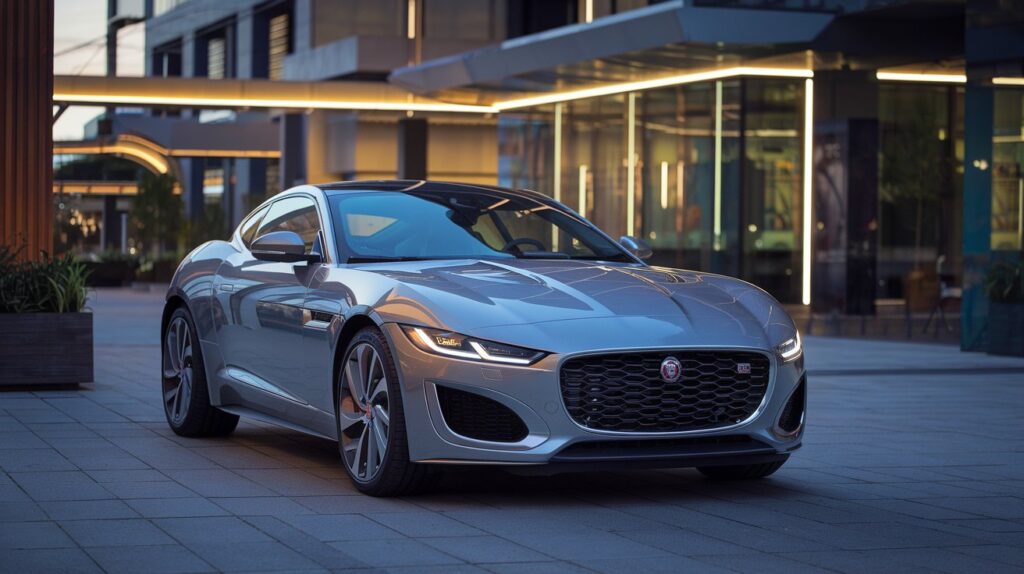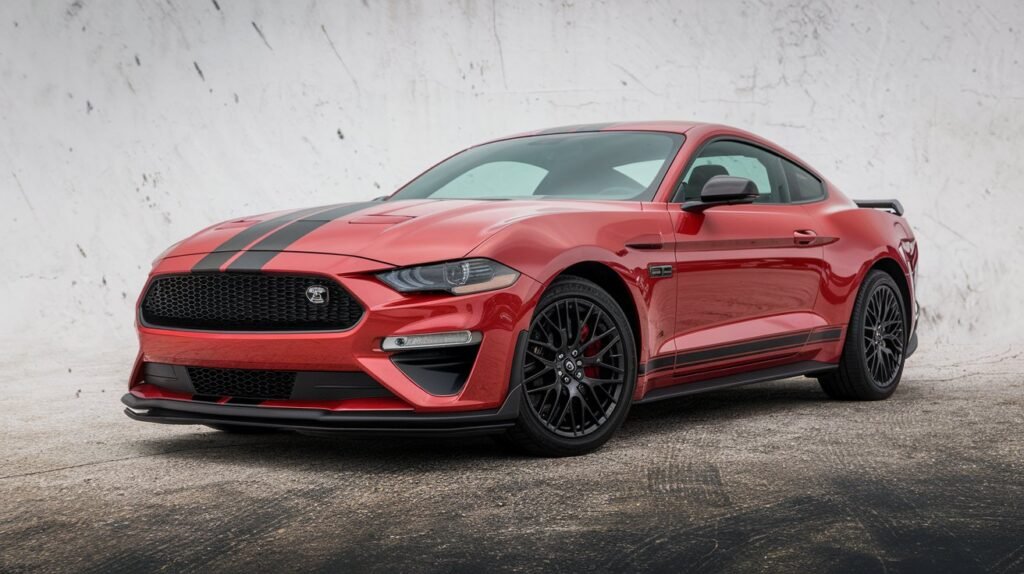The Rotary Reawakens: 2025 Mazda RX-7 Returns to Rewrite Sports Car Rules
After more than two decades of speculation, concept teases, and countless rumors, the legendary Mazda RX-7 finally makes its long-awaited return for 2025. The rebirth of Mazda’s iconic rotary-powered sports coupe isn’t just a nostalgic cash-in—it’s a bold attempt to redefine what an enthusiast’s car should be in an era dominated by EVs and turbocharged engines.
This time, the RX-7 doesn’t merely ride on heritage. It returns with a radically modernized powertrain, a refined chassis, and a purposeful interior that makes it one of the most distinctive offerings in the lightweight sports car space. Whether you’re a die-hard rotary fan or a newcomer to the badge, the 2025 RX-7 brings something truly special.
Let’s explore the specs, technology, performance, and how it stacks up against the likes of the Toyota GR Supra, Nissan Z, and even European competitors.
Powertrain & Performance: Rotary-Hybrid Precision for a New Generation
The soul of the RX-7 has always been its rotary engine, and Mazda didn’t disappoint this time. At the heart of the 2025 model is a newly developed 1.6-liter twin-rotor Wankel rotary engine, mated to a 90-kW electric motor in a parallel-hybrid configuration. This setup produces a combined 365 horsepower and 310 lb-ft of torque—delivered exclusively to the rear wheels.
Transmission options include a slick 6-speed manual as standard and an optional 8-speed dual-clutch automatic with paddle shifters. Mazda claims 0-60 mph in just 4.2 seconds, with a top speed approaching 170 mph.

Unlike older rotary engines, this new hybrid-assisted Wankel addresses common issues like torque lag and poor fuel efficiency. Electric torque fill smooths acceleration at low RPMs, while a mild EV mode allows for silent urban cruising under 30 mph.
In spirited driving, the engine exhibits the familiar high-revving nature and turbine-like sound that rotary fans adore—but now enhanced with regenerative braking and instant torque. It’s not a supercar killer, but it doesn’t try to be. This RX-7 is about balance, purity, and feel.
Chassis, Steering & Handling: Built for Backroad Bliss
The 2025 RX-7 rides on Mazda’s new rear-wheel-drive sports car platform, developed alongside the RX-Vision concept. The architecture prioritizes a low center of gravity, near-perfect 50:50 weight distribution, and chassis rigidity that rivals much pricier performance cars.
Aluminum subframes, a carbon-reinforced roof, and magnesium alloy suspension components help keep curb weight just below 3,100 pounds—making it lighter than the GR Supra and Nissan Z. Add in double-wishbone suspension on all four corners, electronically controlled adaptive dampers, and a torque-vectoring rear differential, and you’ve got one of the sharpest-handling cars under $70K.
Steering feel is a standout. Mazda’s engineers tuned the EPS system for maximum feedback, and the result is steering that’s direct, communicative, and alive in your hands. Whether carving canyons or dancing through a track, the RX-7 offers the kind of driver engagement rarely seen in this price bracket.
Test drives from pre-release events indicate cornering grip of nearly 1.0g, with brake pedal feel and throttle response described as “surgical.”
Interior & Technology: Retro-Futurism Done Right
Slide inside the RX-7 and you’ll find a minimalist but high-quality cockpit that echoes classic Mazda sports cars while embracing current tech standards. Low-slung bucket seats are wrapped in Alcantara with contrast stitching, while carbon fiber trim and rotary-themed gauge graphics pay homage to the RX legacy.
The digital instrument cluster features multiple display modes—including a throwback rotary tachometer and track telemetry. A 10.25-inch central touchscreen powered by Mazda Connect offers wireless Apple CarPlay/Android Auto, navigation, and over-the-air updates.
Audiophiles will appreciate the 12-speaker Bose premium audio system, while daily drivers get comfort features like dual-zone climate control, heated seats, and a full-color head-up display. A rotary-dial infotainment controller remains for tactile control while driving.
Space is understandably tight in this 2-seater coupe, but cargo capacity is surprisingly useful for weekend getaways. Build quality and switchgear feel on par with more premium brands.
Pricing, Trims & Value Proposition
The 2025 RX-7 is offered in three core trims, each offering increasing levels of performance and visual aggression:
- Base Touring — $49,900: Includes manual transmission, Alcantara seats, and rotary gauge cluster.
- Grand Touring — $56,500: Adds adaptive dampers, Bose audio, wireless phone charging, and 8-speed DCT.
- Spirit R — $62,000: Inspired by the final-gen RX-7, it features carbon fiber accents, Brembo brakes, performance summer tires, and limited-slip diff.
This pricing strategy positions the RX-7 smartly between the GR Supra and Porsche 718 Cayman. It also gives enthusiasts a premium yet attainable sports car with a strong brand identity.
Compared to Mazda’s other offerings, the 2025 Mazda MX-30 EV appeals to the eco-conscious city driver, while the RX-7 is clearly tuned for purists.
Safety & Long-Term Reliability
Every 2025 RX-7 comes standard with Mazda’s i-Activsense safety suite: automatic emergency braking, lane-keeping assist, blind-spot monitoring, rear cross-traffic alert, and adaptive cruise control.
Though rotary engines have historically been plagued by reliability concerns, Mazda insists its new rotary-hybrid system resolves past issues. A unique oil metering system, advanced apex seal materials, and electric assist reduce internal stress and heat buildup.
NHTSA safety ratings are pending, but early crash testing by independent labs show strong structural integrity and excellent occupant protection.
Ownership Experience: The Art of Driving Returns
Mazda backs the RX-7’s powertrain with an 8-year/100,000-mile warranty—a clear sign of confidence in the new hybrid rotary setup. Routine maintenance intervals are projected to be on par with conventional sports coupes, and regenerative braking reduces wear on consumables like pads and rotors.
If you’re stepping up from a 2025 Mazda2 hatchback, the RX-7 feels like a leap into a more serious, focused machine—but one that maintains the Mazda ethos of harmony between driver and car.

Owners will need to accept a firmer ride, smaller cabin, and the quirks of rotary startup behavior in colder climates—but in return, they get one of the most engaging driving machines this side of six figures.
Pros and Cons of the 2025 Mazda RX-7
Pros:
- Distinctive rotary-hybrid powertrain blends tradition with innovation
- Stellar chassis dynamics and tactile steering
- Premium interior materials and heritage design touches
- Well-priced against key rivals
- Available manual transmission
Cons:
- Limited interior and cargo space
- Long-term rotary durability still unproven to some
- Not the most powerful in its class
- No AWD option for winter buyers
Competitor Comparison: RX-7 vs GR Supra vs Nissan Z vs 718 Cayman
The RX-7 enters a hotly contested segment. Here’s how it stacks up:
- Toyota GR Supra (382 hp): Quicker in a straight line, but heavier and less engaging. RX-7 wins in steering feel and driver connection.
- Nissan Z (400 hp): Has brute force and nostalgia, but lacks the RX-7’s refinement and lightweight agility.
- Porsche 718 Cayman (300–394 hp): More expensive and refined, but doesn’t offer the same unique rotary thrill or value for dollar.
The RX-7 isn’t about chasing peak stats—it’s about delivering emotion and driver involvement in a package few rivals match.
Conclusion: The RX-7 Isn’t Just Back—It’s Reborn
The 2025 Mazda RX-7 is more than just a return of a famous badge. It’s a statement that emotion still matters in automotive engineering. With its rotary-hybrid powertrain, impeccable chassis tuning, and everyday usability, the RX-7 redefines what a modern driver’s car can be.
It’s aimed squarely at enthusiasts who value balance, feedback, and authenticity over raw power. For those drivers, there may be no better new sports car under $70K.
FAQs About the 2025 Mazda RX-7
Is the 2025 RX-7 really rotary-powered?
Yes, the RX-7 features a 1.6L twin-rotor engine paired with an electric motor. It’s the world’s first production rotary-hybrid sports car, offering both tradition and efficiency.
What’s the estimated fuel economy?
Official EPA numbers are pending, but Mazda estimates around 30 mpg combined—an impressive figure given the car’s performance, thanks to hybrid assistance.
Does it offer a manual transmission?
Yes, every trim comes standard with a 6-speed manual gearbox. An 8-speed automatic is available for those who prefer paddle shifting convenience.
How reliable is the new rotary engine?
Mazda has engineered the new rotary to resolve past concerns like apex seal wear and poor fuel economy. An 8-year warranty reinforces this confidence.
Will the RX-7 be limited production?
No, the RX-7 will be a full-production model, but high demand and initial supply limitations may create short-term scarcity, especially for the Spirit R trim.
What’s the exhaust note like?
Expect a high-revving, turbine-like wail characteristic of rotaries, with a modern hybrid twist. It’s unique, smooth, and emotional—unlike traditional four- or six-cylinders.
Can it drive on electric power alone?
Yes, the RX-7 can operate in EV mode at low speeds under 30 mph for short distances, ideal for city driving or garage maneuvering.
Does it feature launch control?
Yes, launch control is integrated into both manual and automatic variants, ensuring consistent and optimized acceleration.
Where is the RX-7 manufactured?
Production takes place at Mazda’s Hiroshima plant in Japan, alongside the MX-5 Miata and other performance models.
What colors will be available at launch?
Initial colors include Soul Red Crystal, Jet Black Mica, Snowflake White Pearl, and the exclusive RX Blue Metallic for the Spirit R trim.

